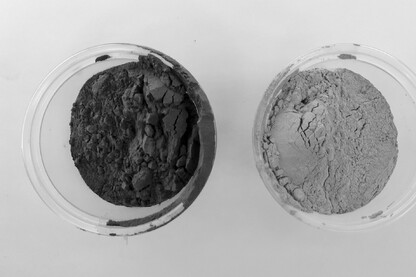What quality indicators should be paid attention to in fly ash testing?
Fly ash is becoming more and more complex, the supply is increasingly tight, and there are many patterns, which brings great difficulties to the quality control of fly ash. The detection of fly ash is a seemingly simple but actually very complicated work, which requires not only strong professional knowledge and work experience of the testing personnel, but also further improvement of analysis methods and test methods. It is hoped that scholars and relevant technical personnel will put forward more, better and more instructive opinions and suggestions, so as to avoid the situation that users are at a loss, to promote the standardization of fly ash testing methods in my country, and to adapt to fly ash technology and modern concrete. technology needs to evolve.

(1) Fineness
The fineness of fly ash generally uses the sieve residue of the 45μm square-hole sieve as a technical indicator of its quality. This detection method is simple and time-saving. It is widely used in the acceptance of the batching plant and is often used as one of the important reference indicators. The fineness index of the sieve can only be used as a detection method for the quality control of the original ash. It is difficult to use the ground fine ash. Sometimes the ground fine ash can reach the fineness of the Class I fly ash, but it cannot be used as the Class I fly ash. . Generally speaking, the particle shape of the ground ash is different from the original one, and the particle shape is usually non-spherical, and a microscope (magnifying glass) can be used to observe and judge when testing.
(2) Water demand ratio
The water demand ratio can objectively reflect the influence of fly ash mixed into concrete on the water consumption and fluidity of the mixture. It is one of the important quality indicators of fly ash and the main factor affecting the water demand ratio of fly ash. There are fineness, carbon content, particle morphology and so on.
According to the detection method of fly ash water demand ratio specified in the current national standard, due to the difference of operators, the existence of error factors such as the vibration force, the degree of wetting of the stirring device and the jumping table, and the degree of operation specification, it is necessary to control the flow of the mortar. It is still very difficult to measure the range of 145-15mm, and the difference between the fluidity of the comparison mortar and the test mortar is within ±2mm. In practice, it is difficult and inconvenient to use the water demand ratio to detect and accept fly ash.
(3) Loss on ignition
Loss on ignition is a quantitative index that represents the unburned substances in fly ash. my country’s standards and regulations have stricter regulations on the limit of loss on ignition to control carbon content. As far as undisturbed ash is concerned, the larger the loss on ignition, the greater the amount of unburned carbon. The porous carbon particles adsorb water and also adsorb the admixture dissolved in the water, resulting in a dispersing amount of admixture and mixing. The amount of free water in the compound is insufficient, and the workability of concrete is reduced. The current coal-fired technology has made great progress, and the coal-fired combustion is relatively sufficient, and the loss on ignition is generally not large. However, when other things such as limestone powder are mixed with fly ash, the loss on ignition will increase. Therefore, if the loss on ignition is too large, it can be suspected that the fly ash is mixed with high-temperature easily decomposable substances (such as limestone powder). The loss on ignition of fly ash should be used as the basis for quality judgment together with indicators such as fineness and water demand ratio.
(4) Activity Index
With the advancement of grinding technology, driven by interests, some suppliers often sell ordinary undisturbed ash as “high-quality ash” after grinding. Limestone, brick slag and other materials or different grades of fly ash are put together for compound grinding and sold as “high-quality ash”. Generally speaking, the incorporated inactive materials have no secondary hydration effect and are very active, so the detection of the activity index of fly ash is particularly important.
(5) Sulfur trioxide
The content of SO3 in fly ash is clearly defined in national standards and specifications. It is generally believed that too much SO3 in fly ash may cause delayed calcium sulfoaluminate to form in concrete, resulting in the destruction of volume expansion. Most of the sulfur in traditional fly ash exists in the form of sulfate, and it is feasible to measure SO3 content by barium sulfate gravimetric method and ion exchange method. The fly ash or desulfurization ash collected after flue gas desulfurization contains a large amount of by-products such as calcium sulfite. The solubility of calcium sulfite is very low, and the sulfite is easily volatilized as SO2 under acidic conditions, which is likely to cause Desulfurization ash with high SO3 content was mistakenly regarded as qualified, which caused hidden quality problems in concrete projects.
